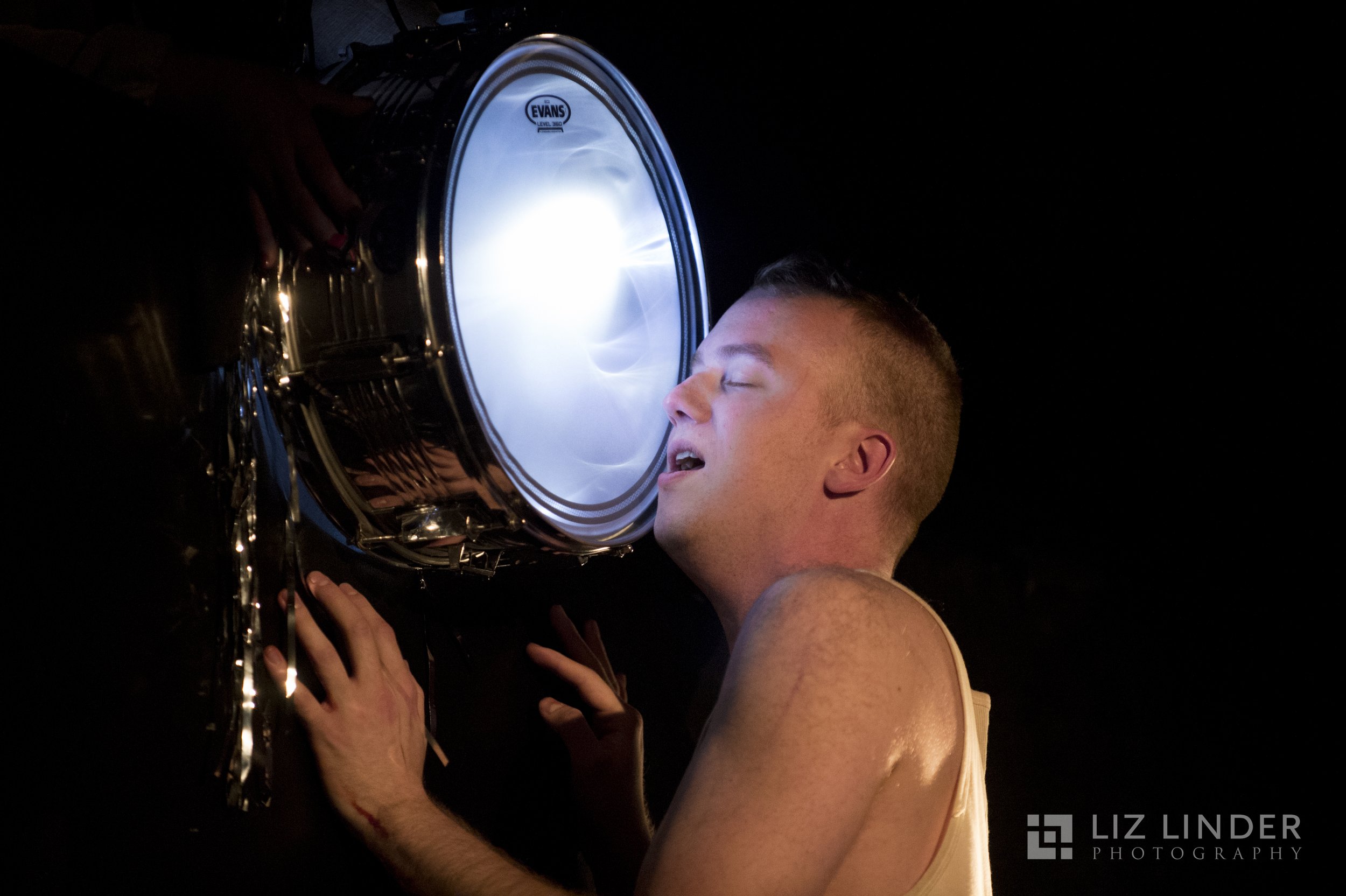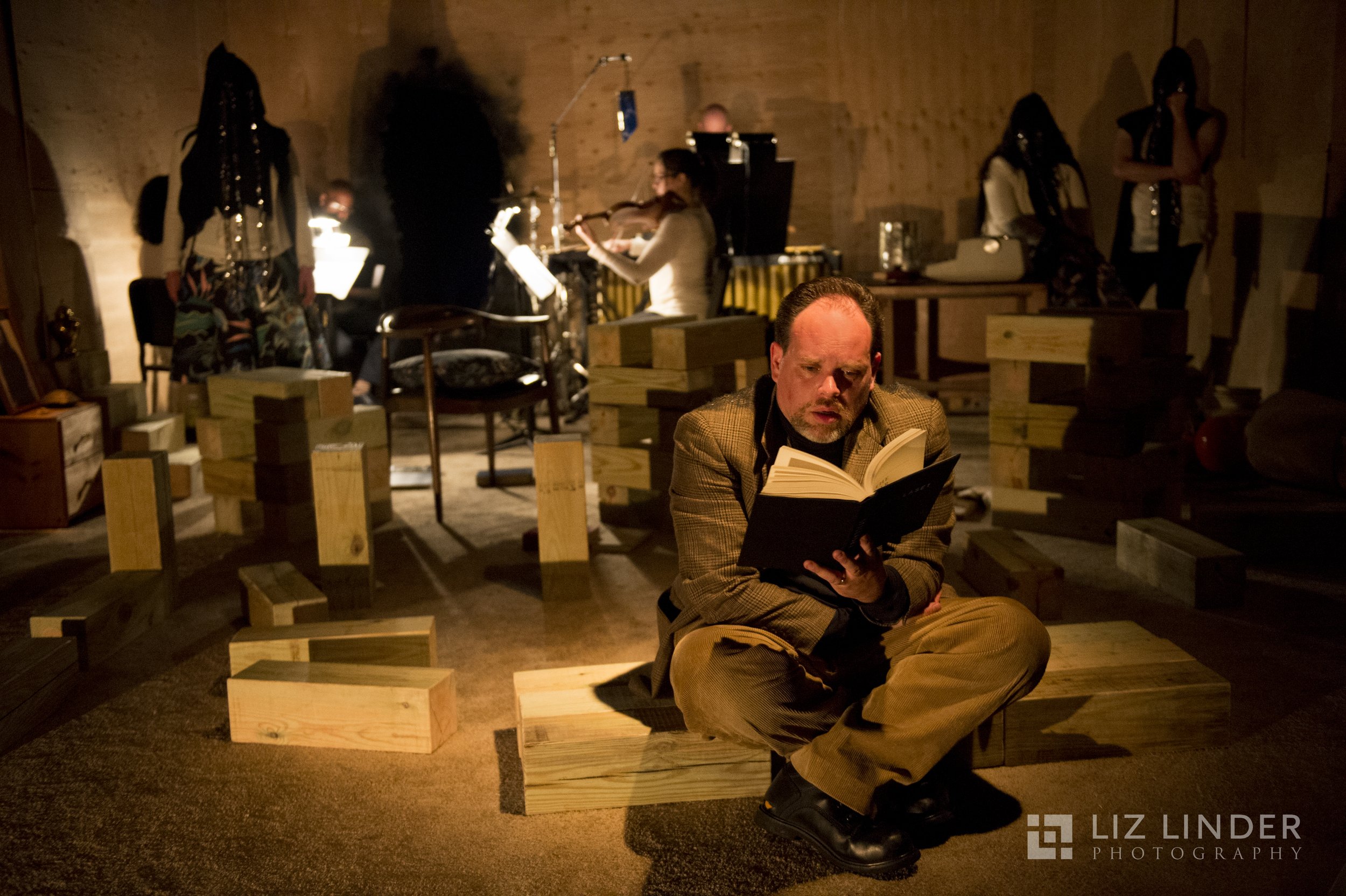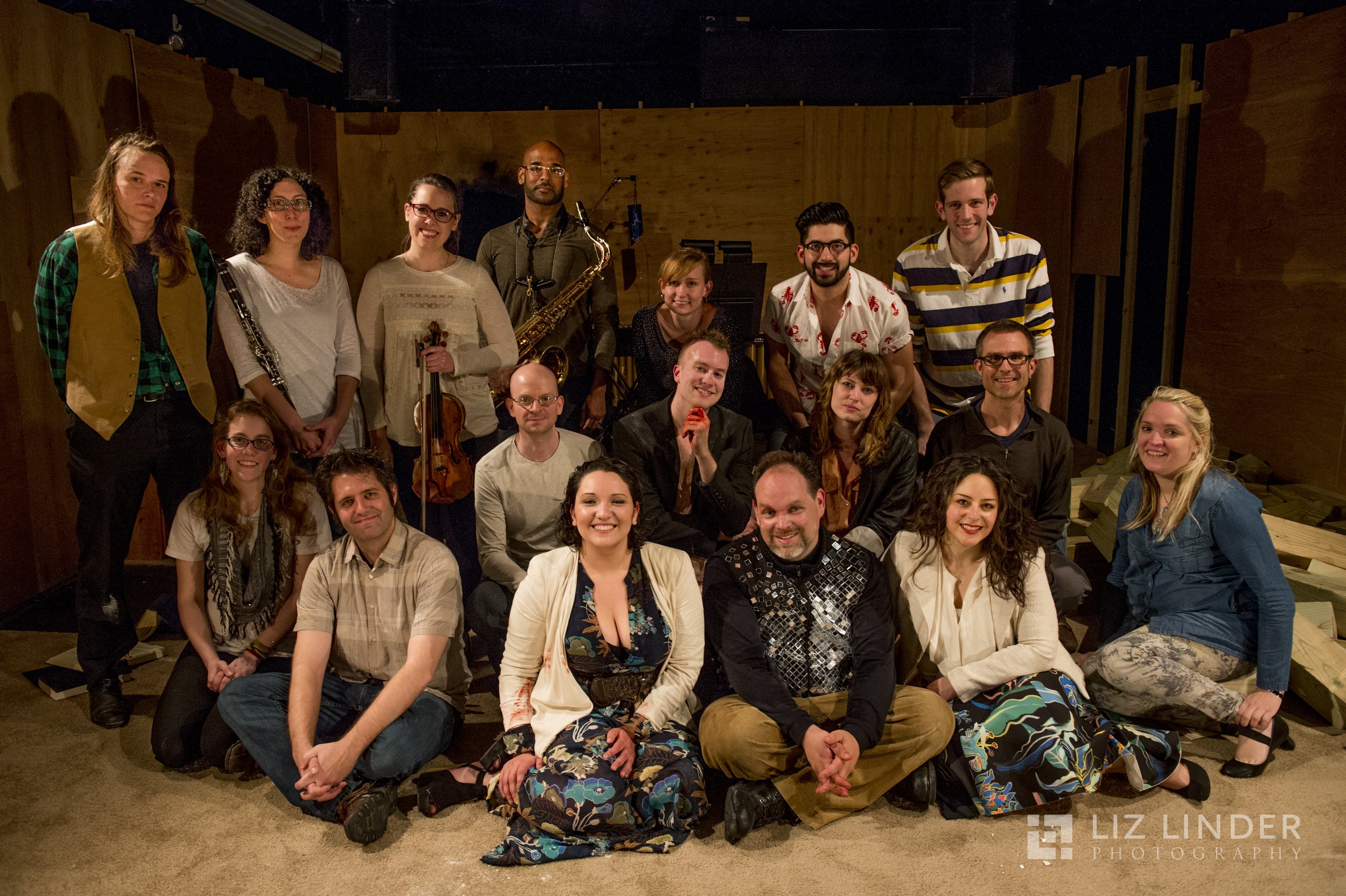PEDR SOLIS
Music by Per Bloland, Libretto by Paul Schick
Pedr Solis is partially based on “The Tower,” a play by Hugo von Hofmannsthal, and the life of Norwegian author Pedr Solis.
Title: Petr Solis
Composer: Per Bloland
Libretto: Paul Schick
Duration: 70min
Instrumantation: sop, mezzo, ct, bari, b.cl, sax, vln, perc, electronics
Director: Laine Rettmer
Premiere: 2015
Status: Active, Available for revival or co-production
PRESS
“Per Bloland’s “Pedr Solis,” given its premiere staging on Friday by Guerilla Opera, hit a sweet spot…” THE BOSTON GLOBE
HISTORY
World Premiere - May 15, 2015 by Guerilla Opera
ABOUT THE OPERA
Pedr Solis is partially based on “The Tower,” a play by Hugo von Hofmannsthal, and the life of Norwegian author Pedr Solis. In 1970 Solis’s novel “Stillaset” spills into his real life in Oslo. The Nordic god Loki narrates.
“When Guerilla Opera first approached me with the possibility of composing for them, I immediately considered drawing on the strange and mysterious life of the Norwegian novelist Pedr Solis. I have been fascinated with this little‐known experimental author of modernist literature for several years now, and have composed a number of pieces based on his novels and ideas. When I approached Paul Schick about the possibility of writing a libretto somehow involving this man and his work, he became very excited about the idea. It was my description of Solis’ novel Stillasetthat most interested Paul. He immediately made a connection with a play called The Tower by Hugo von Hofmannsthal (who, incidentally, was the librettist for some of Richard Strauss’ best known operas).
The resulting libretto for the opera Pedr Solis is a complex tale that deftly blends elements of Solis’ life in Norway, his novel Stillaset and Hofmannsthal’s play. The Hofmannsthal play, The Tower, involves a king who sequesters his only offspring, the crown prince, in a tower after it is prophesied that the prince will kill him. The characters in the opera Pedr Solis are drawn from Solis’ life and novels, while the dramatic action is mostly from Hofmannsthal’s play. The separation between these sources is not clearly defined, leading to some intriguing ambiguity in the story line. For example, Solis’ role in the opera is both that of an author, with the power only to alter the realities encompassed by his own works of fiction, and a king‐figure, the leader of some unspecified realm. Ignis is both Solis’ son (and heir to his “kingdom”), and the main character from Solis’ novel Stillaset. (In reality, as far as I can discern, the actual author Pedr Solis had no children.) The setting of the opera fluctuates between the undesignated “mythic time” of the novel Stillaset, and Solis’ Oslo of the 1970s.
The life and work of the man, Pedr Solis, warrants further explanation. Solis was arguably one of the most abstract practitioners of literary modernism to emerge from Norway. Stillaset (or “The Scaffold”), his most famous novel, was written in the late 1960s. The story describes the journey of an unnamed protagonist as he navigates a seemingly infinite edifice. The early chapters chronicle an orderly progression through a series of barren chambers, drawing on imagery of sterility, order, empty self‐referentiality (a library filled with bibliographies, for example) and moonlight. However this sterility is disrupted upon his discovery of a “Black Book,” a type of compendium of Norwegian folklore and magic maintained even into the modern age. The linear narrative begins to break down as elements drawn from Norse mythology intervene. The text itself deteriorates as well, increasingly intruded upon by passages in Old Norse. Images of monsters such as Fenris, Hel and Jormundgand, as well as Loki, their father, begin to appear. He enters rooms but never leaves them, finds himself in rooms he has never entered. He is struck by the color of the sky, the trees and especially their roots, which seem intertwined with everything. The solidity of the walls seems to fluctuate, rendering some rooms discrete, others continuous. These intrusions, these disruptions of existing order are both terrifying and beautiful. The novel does not have an ending in the traditional sense. The author’s Norwegian is eventually overcome completely by Old Norse, which itself comes apart—letters, sentences and finally paragraphs go missing or are replaced with symbols resembling runes.
After completing Stillaset, Solis is said to have begun work on a follow up novel. It was never completed however, and only scraps of his notes are extant. At some point during this process he simply disappeared from public view. As best I can determine, he either died or quietly retired in isolation to the very North of Norway (or perhaps both).” — Per Bloland
Originating Ensemble & Design Team: Carrie Cheron (mezzo-soprano), Brian Church (baritone), Aliana de la Guardia (soprano), Douglas Dodson (countertenor), Amy Advocat (clarinets), Gabriella Diaz (violin), Kent O’Doherty (saxophones) Mike Williams (percussion), Alfonso Peduto (electronics), Laine Rettmer (stage director), Julia Noulin-Merat (scenic designer), Daniel Chapman (lighting designer), Neil Fortin (costume designer), Andrea Merkx (props master/assistant director), Mark DiGiovanni (technical director)
ABOUT THE COMPOSER
Per Bloland is a composer of acoustic and electroacoustic music whose works have been praised by the New York Times as “lush, caustic,” and “irresistible.” His compositions range from intimate solo pieces to works for large orchestra, and incorporate video, dance, and custom-built electronics. He has received awards and recognition from organizations including IRCAM, ICMA, SEAMUS/ASCAP, the Ohio Arts Council, Digital Art Awards of Tokyo, ISCM, the Martirano Competition, and SCI/ASCAP. His first opera, Pedr Solis, commissioned and premiered by Guerilla Opera in 2015, received rave reviews from the Boston Globe and the Boston Classical Review. He has received commissions from loadbang, Keith Kirchoff, Wild Rumpus, the Ecce Ensemble, Ensemble Pi, the Callithumpian Consort, Stanford’s CCRMA, SEAMUS/ASCAP, the Kenners, Michael Straus and Patti Cudd. His music can be heard on the TauKay (Italy), Capstone, Spektral, and SEAMUS labels, and through the MIT Press. A portrait CD of his work, performed by Ecce Ensemble, was recently released on Tzadik.
Bloland is the co-creator of the Electromagnetically-Prepared Piano, about which he has given numerous lecture/demonstrations and published a paper. He is an Assistant Professor of Composition and Technology at Miami University, Ohio, and in 2013 completed a five-month Musical Research Residency at IRCAM in Paris. He received his D.M.A. in composition from Stanford University and his M.M. from the University of Texas at Austin.
Scores may be purchased at www.babelscores.com/perbloland
CONTACT
Inquiries contact: Aliana de la Guardia.





